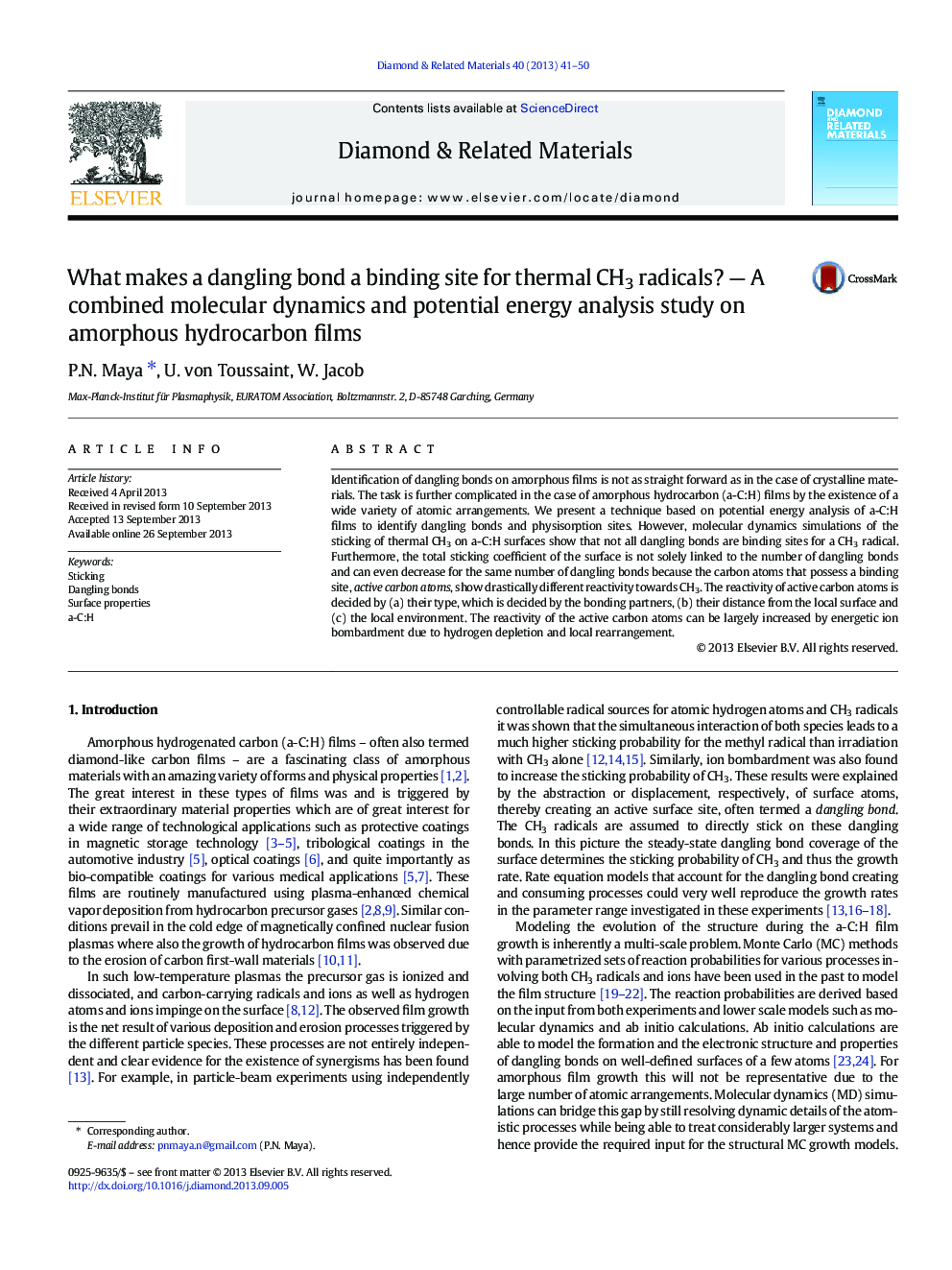| کد مقاله | کد نشریه | سال انتشار | مقاله انگلیسی | نسخه تمام متن |
|---|---|---|---|---|
| 702153 | 1460791 | 2013 | 10 صفحه PDF | دانلود رایگان |

• Sticking of CH3 radicals on realistic amorphous hydrocarbon films is investigated.
• Dangling bonds are identified using classical MD and potential energy analysis.
• MD simulations show that not all dangling bonds are binding sites for CH3 radical.
• Active C atoms that posses binding sites show a neighborhood dependent reactivity.
• Ion bombardment enhances the reactivity of the active carbon atoms and the surface.
Identification of dangling bonds on amorphous films is not as straight forward as in the case of crystalline materials. The task is further complicated in the case of amorphous hydrocarbon (a-C:H) films by the existence of a wide variety of atomic arrangements. We present a technique based on potential energy analysis of a-C:H films to identify dangling bonds and physisorption sites. However, molecular dynamics simulations of the sticking of thermal CH3 on a-C:H surfaces show that not all dangling bonds are binding sites for a CH3 radical. Furthermore, the total sticking coefficient of the surface is not solely linked to the number of dangling bonds and can even decrease for the same number of dangling bonds because the carbon atoms that possess a binding site, active carbon atoms, show drastically different reactivity towards CH3. The reactivity of active carbon atoms is decided by (a) their type, which is decided by the bonding partners, (b) their distance from the local surface and (c) the local environment. The reactivity of the active carbon atoms can be largely increased by energetic ion bombardment due to hydrogen depletion and local rearrangement.
Journal: Diamond and Related Materials - Volume 40, November 2013, Pages 41–50